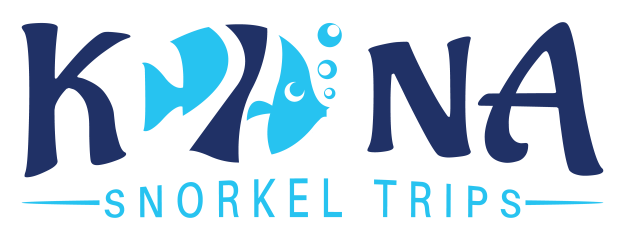Kona Manta Ray Snorkel: Hawaiian Adventure Awaits
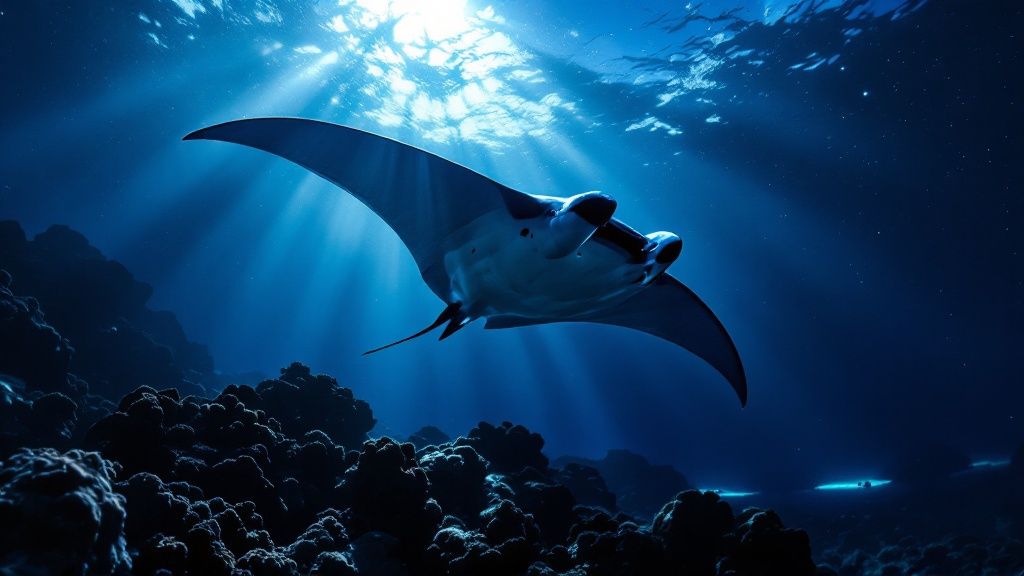
The Magic of Kona's Manta Ray Encounters
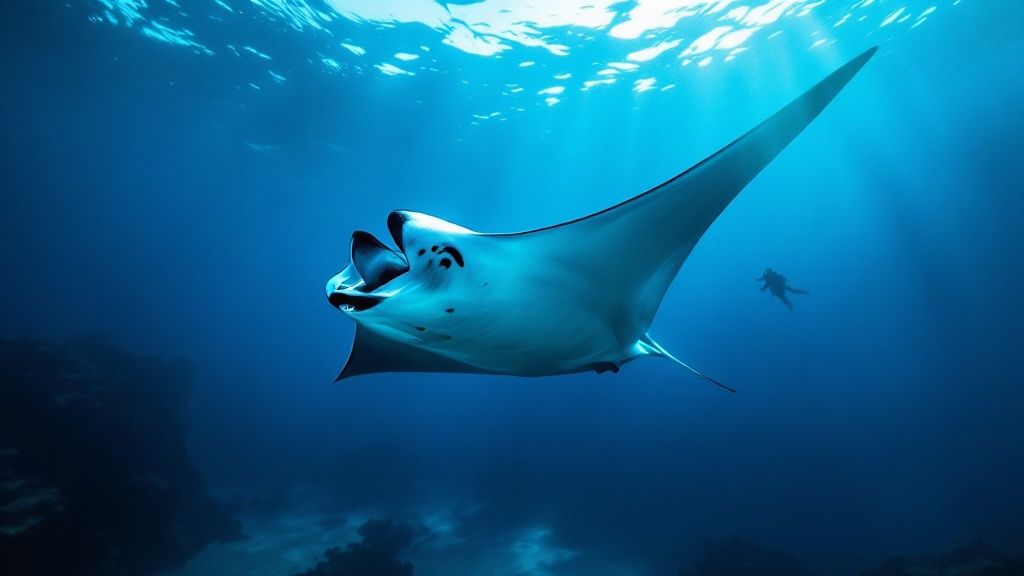
Kona, Hawaii, is more than just a beautiful island; it's a premier destination for an unforgettable wildlife experience: snorkeling with manta rays. What makes Kona so special? The remarkably high success rate of manta ray sightings. People travel from all corners of the globe to witness these gentle giants.
The Kona Coast: A Manta Ray Sanctuary
The Big Island's unique underwater landscape creates the perfect dining spot for manta rays. Nutrient-rich currents flow along the Kona coast, bringing an abundance of plankton, the manta ray's primary food source. This reliable food supply, combined with the calm, clear waters, makes it an ideal habitat.
Areas like Manta Village and Manta Heaven, with their shallow, sandy bottoms, become bustling feeding grounds each night. This offers snorkelers consistent opportunities to witness this breathtaking spectacle.
From Accidental Discovery to Signature Experience
Kona's manta ray tourism has a fascinating origin story. Divers initially observed mantas gathering around the lights from coastal hotels. This observation sparked an idea: could specialized lights attract plankton and, in turn, the mantas?
This innovative approach led to the development of carefully managed, sustainable tours. These tours allow for close encounters while respecting the mantas' natural behavior. For more information and booking options, check out the manta ray snorkel tour with Kona Honu Divers or Manta Ray Night Snorkel Hawaii.
Economic Impact and Global Inspiration
The popularity of these encounters is undeniable. Kona's manta ray tourism brings in tens of millions of dollars annually. Over 80,000 people participate each year, paying between $100-$200 per tour. With an 80-90% sighting rate, Kona's model is a remarkable example of successful wildlife tourism.
Data tracking since 2009 confirms this consistency, revealing predictable seasonal patterns. This allows operators to choose the best viewing locations between Manta Village and Manta Heaven, ensuring high success rates year-round. This reliability, backed by over a decade of data, has inspired similar ventures worldwide, although none have matched Kona's scale and success. More detailed statistics are available in the Manta Ray Report. Other excellent tour operators include Kona Snorkel Trips and Captain Cook Snorkeling Tours. Kona's magical manta ray encounters continue to captivate visitors, making it a must-do experience for nature lovers.
Prime Times and Locations for Unforgettable Encounters
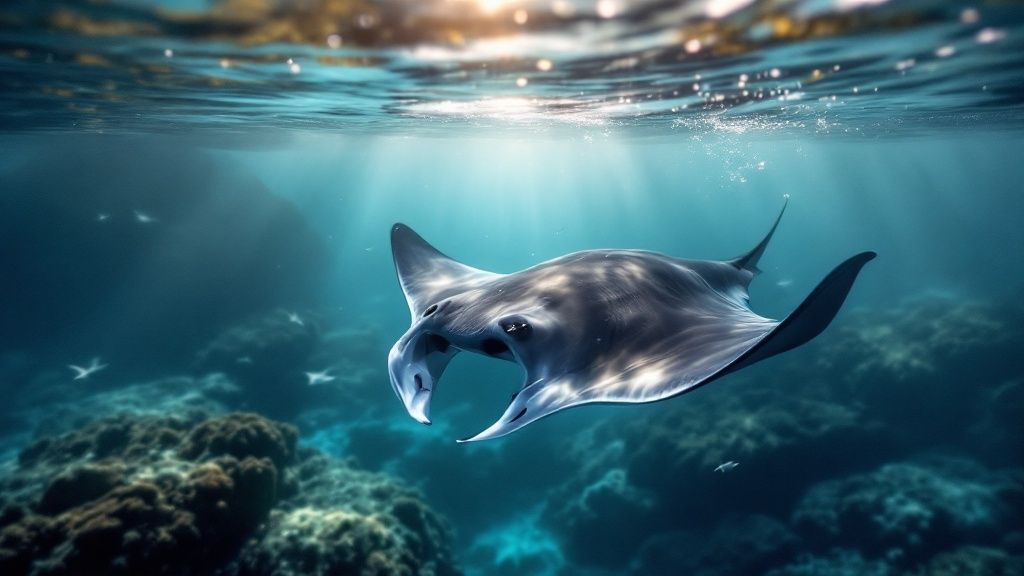
When planning a Kona manta ray snorkel, timing is crucial. The best viewing opportunities occur after sunset. As darkness falls, plankton, the manta ray's primary food source, ascends to the surface. This creates a feeding frenzy, attracting the mantas closer, providing an ideal spectacle for snorkelers.
Manta Village vs. Manta Heaven: Choosing Your Spot
Kona offers two main viewing locations: Manta Village (Keauhou) and Manta Heaven (Garden Eel Cove). Both offer incredible Kona manta ray snorkel experiences, but each has distinct qualities. Manta Village, known for its calmer waters, is often favored by beginners or those prone to seasickness. Manta Heaven, slightly further north, features a different underwater landscape, sometimes attracting larger manta gatherings.
To help you decide, we've compiled a comparison table:
Manta Ray Snorkel Sites Comparison: This table compares key features of the main manta ray snorkel locations in Kona.
| Feature | Manta Village (Keauhou) | Manta Heaven (Garden Eel Cove) |
|---|---|---|
| Water Conditions | Generally Calmer | Can be more variable |
| Experience Level | Suitable for beginners | Better for experienced snorkelers |
| Manta Ray Sightings | Frequent | Potential for larger groups |
| Location | Near Keauhou | North of Keauhou |
As you can see, both locations offer unique advantages depending on your experience level and what you hope to see.
Experienced Kona manta ray snorkel operators strategically choose between these locations based on plankton density and ocean conditions. This maximizes the chance of a memorable encounter, no matter the site.
Maximizing Your In-Water Time
The right departure point can greatly enhance your Kona manta ray snorkel trip. Choose a tour departing from a harbor close to your chosen viewing spot to minimize travel time and maximize in-water time with the mantas. For example, some operators depart from Honokohau Harbor, providing swift access to both Manta Village and Manta Heaven. For more on Kona snorkel tours, see: Kona Snorkel Trips Sitemap.
Seasonal Variations and Plankton Blooms
Plankton levels shift throughout the year, impacting manta ray feeding behavior. Kona manta ray snorkel tours run year-round with high success rates. Winter months, especially during plankton blooms, typically attract larger manta gatherings, improving your chances of seeing multiple mantas at once. Manta Ray Statistics provide more detailed information on manta ray populations.
Even during the off-season, knowledgeable operators use their understanding of local conditions to deliver exceptional experiences. They use specialized lights to concentrate plankton, ensuring regular manta ray sightings. This makes Kona a truly unique and predictable location for manta ray encounters. Kona operators boast impressive 80-90% success rates annually. This consistency comes from dedicated research, using nightly tracking and photo-ID databases of individual mantas at both locations between 2009-2014. This detailed data collection helps researchers understand manta movement and health, supporting the sustainable practices that attract approximately 80,000 participants annually.
The Fascinating Science Behind Kona's Manta Magic
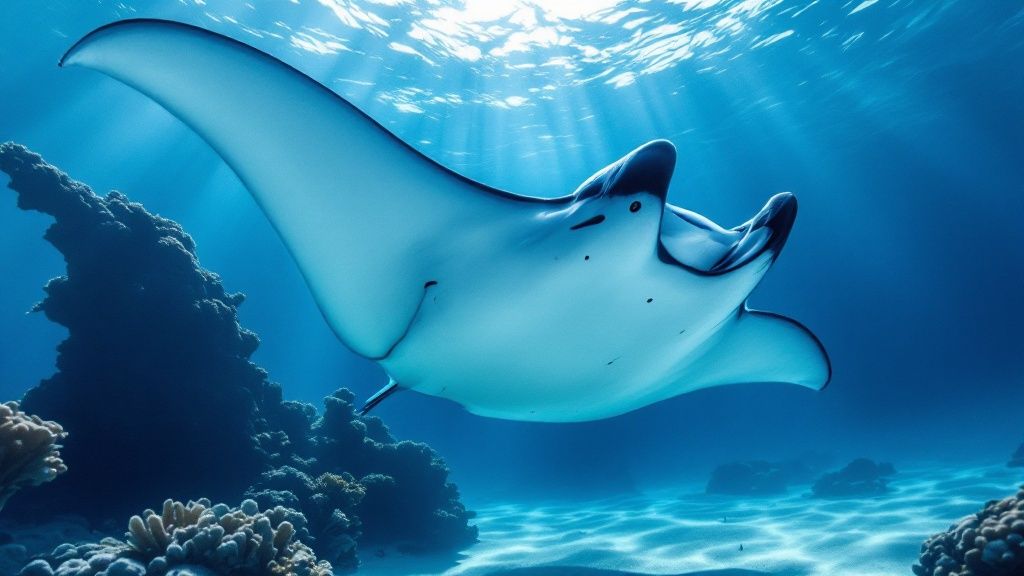
The nighttime ballet of manta rays in Kona, Hawaii, is more than just a beautiful show. It's a captivating example of the intersection of science and nature. The predictability of these encounters comes from a deep understanding of manta ray biology and behavior.
The Plankton Buffet: A Feast of Light
Manta rays, despite their massive size, are filter feeders. They consume large quantities of tiny plankton. This is where the science comes into play. Tour operators use special lighting techniques to create concentrated areas of plankton.
These lights, often attached to floating platforms, mimic the natural bioluminescence that attracts plankton. This creates a true feast for the mantas, drawing them in with the promise of an easily accessible food source. They aren't attracted to the light itself, but rather the food it brings.
This innovative approach has made Kona one of the most reliable places in the world to see manta rays. In fact, Kona's reputation is built on these specialized lighting techniques. By aiming lights upwards, operators create plankton clouds that attract mantas incredibly close to snorkelers.
Over 250 individual mantas are now identified in local databases, some with residency patterns spanning more than 10 years. This illustrates how understanding basic biology can elevate an already amazing experience. Learn more about these incredible tours here.
Tracking Giants: Identifying Individuals
Beyond simply attracting mantas, researchers and tour operators use sophisticated tracking methods. Each manta has a unique pattern of spots on its underside, much like a human fingerprint. This allows researchers to identify and track individual mantas. Many are known to local operators by name and even personality.
This meticulous tracking has revealed a wealth of knowledge about manta ray social behaviors and feeding strategies. For example, data from 2013 showed individual mantas visiting sites up to 15 times per month. This highlights how effective these lighting techniques are in transforming occasional sightings into predictable nightly occurrences. For more information on Kona snorkel trips, check out this site map.
Sustainable Encounters: Protecting the Magic
Understanding manta ray biology is also key to creating sustainable tour practices. Operators stress respectful interaction, ensuring the mantas remain undisturbed while feeding. This dedication to conservation protects the mantas and contributes to the long-term viability of this unique Kona experience. The balance benefits both the local economy and the magnificent creatures that make these encounters so special.
Preparing for Your Kona Manta Ray Snorkel: From Shore to Sea
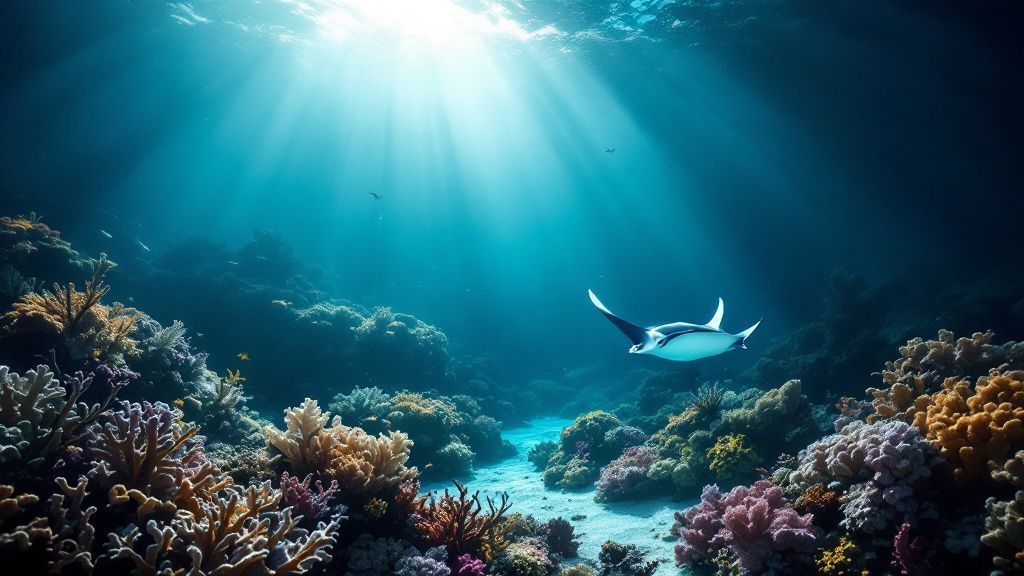
Getting ready for a Kona manta ray snorkel? Fantastic! This guide will tell you everything you need to know for a smooth transition from the shore to the ocean, ensuring a comfortable and unforgettable experience. We'll cover what to expect and how to best prepare for this special nighttime adventure.
From the Dock to the Deep: The Boat Journey
Most Kona manta ray snorkel tours start with a quick boat trip to the viewing location, typically Manta Village or Manta Heaven. This ride usually takes just a few minutes, depending on the harbor and the site. It's a great chance to enjoy the coastal views.
During the boat ride, the crew will typically give a safety briefing and explain the snorkeling procedures. They'll also likely share interesting facts about manta rays and the local marine life, getting you excited for what's to come.
Entering the Water: Your First Moments
Once you arrive at the snorkel spot, the crew will help you into the water. Most operators use a floating platform with lights to attract plankton, which in turn attract the manta rays. You'll generally hold onto the platform or use provided flotation devices like pool noodles.
Even if you're not a confident swimmer, the flotation devices offer plenty of support so you can relax and watch the mantas. If you're still unsure, let the crew know. Many tours offer the option to view from the boat.
Respectful Observation: Interacting With Mantas
Remember, as the manta rays gather to feed, these magnificent creatures are wild animals. Keep a respectful distance and do not touch them. Their skin is covered in a protective mucous layer, vital for their immune system, and touching them can disrupt this delicate balance.
Witnessing their natural behavior is a privilege. By being mindful and heeding the guides’ instructions, you contribute to a safe and enjoyable experience for both you and the mantas. You can find more information at Kona Snorkel Trips Sitemap.
Preparing Onshore: Essentials for Your Trip
Planning ahead ensures a comfortable Kona manta ray snorkel. While the in-water experience is the main event, consider what you'll need before you even leave your hotel. Bringing a light sweater or jacket is a good idea, as evenings out on the water can be cool, especially after being in the ocean.
A towel and a change of clothes are also recommended for after your snorkel. For more tips on planning your manta ray experience, check out the helpful resources available on Kona Honu Divers and Manta Ray Night Snorkel Hawaii.
Gear Up: Essential and Optional Equipment
Most Kona manta ray snorkel tours provide basic snorkeling gear. However, you might want to bring your own mask and snorkel for a better, more comfortable fit.
Some tours offer wetsuits, which can be more comfortable in cooler water. If you’re prone to seasickness, consider taking motion sickness medication or using patches before the tour.
Capturing the Moment: Photography Tips
To capture photos or videos of your Kona manta ray adventure, a GoPro or other waterproof camera is a great option. Make sure it’s securely fastened to a float or wrist strap to prevent it from getting lost.
Remember to prioritize enjoying the experience itself. Focus on observing the manta rays, and try not to spend too much time fiddling with your camera, which could interrupt their feeding. Some operators even offer photography packages, taking professional-quality photos for you.
To help you prepare, here's a handy checklist:
What to Bring for Your Manta Ray Snorkel: Essential items and optional equipment for your manta ray snorkeling experience
| Item | Provided by Tour? | Importance Level | Notes |
|---|---|---|---|
| Mask & Snorkel | Usually | Recommended | Bringing your own ensures a comfortable fit. |
| Towel | No | Essential | For drying off after your snorkel. |
| Change of Clothes | No | Essential | To change into after your snorkel. |
| Light Sweater/Jacket | No | Recommended | Evenings on the water can be cool. |
| Waterproof Camera | No | Optional | For capturing photos and videos. |
| Motion Sickness Medication/Patches | No | Optional | If you are prone to seasickness. |
| Wetsuit | Sometimes | Optional | Enhances comfort in cooler water. Check with your tour operator. |
This table summarizes the key items you may want to bring on your manta ray snorkel tour. While most basic gear is provided, personalized items like masks and snorkels are often best brought from home. Don't forget those extra layers for when you're out of the water!
Selecting Your Perfect Kona Manta Ray Snorkel Experience
Not all Kona manta ray snorkel tours are the same. Finding the right one for you can transform an already incredible experience into something truly special. This involves understanding the subtle differences between operators, such as boat size, group dynamics, and what's included onboard.
Boat Size and Comfort: Finding Your Sweet Spot
The boat's design significantly impacts your comfort, especially if you're susceptible to seasickness. Larger vessels offer more stability, minimizing the rocking motion. Smaller boats, however, can get you to the manta ray viewing sites faster, giving you more time in the water. Weigh which is more important to you: a smoother ride or maximizing your snorkel time.
Group Size: Personal Touch or Shared Excitement
The number of people on your tour can drastically change the feel of the experience. Some people prefer smaller, more intimate groups for a personalized touch and closer interaction with the guides. Others enjoy the lively atmosphere of a larger group. Consider which setting you'd find more enjoyable for your manta ray encounter.
Amenities and Extras: The Value Proposition
Some tours provide extras like wetsuits, snacks, or even professional photography packages. These add-ons can enhance your trip, but think about your budget and what you truly value. Sometimes, a simple Kona manta ray snorkel tour focused purely on the marine life encounter is the most rewarding.
To help you choose the best tour, we've compiled a comparison of some top-rated operators:
Top Kona Manta Ray Tour Operators
Comparison of key features among recommended tour providers
| Tour Company | Price Range | Group Size | Special Features | Departure Location |
|---|---|---|---|---|
| Fair Wind Cruises | $150 – $200 | 40-60 | Dinner cruise option, large stable boat | Keauhou Bay |
| Sea Paradise | $130 – $170 | 20-30 | Smaller group size, personalized attention | Honokohau Harbor |
| Manta Adventures | $140 – $180 | 25-40 | Hydrophones to hear manta calls, photography packages available | Honokohau Harbor |
| Big Island Divers | $120 – $160 | 15-25 | Focus on diving, smaller groups, experienced guides | Kona |
This table represents a sample comparison. Prices and features are subject to change, so it's always best to check directly with the tour operators.
As you can see, each operator offers a slightly different experience. Choosing the right one depends on your individual preferences and budget.
Key Questions to Ask Before You Book
Before committing to a tour, asking a few key questions can save you time and potential disappointment. Always inquire about the operator's experience and safety record. A strong track record and commitment to sustainable practices are essential. Find out exactly what's included in the price to avoid any surprises. This helps you understand what gear is provided, if refreshments are included, and if there are any potential extra costs. Finally, always check the cancellation policy in case your plans change. Knowing the group size will also give you a better sense of the experience.
Red Flags: Proceed With Caution
Be cautious of operators who guarantee 100% manta ray sightings. While Kona boasts a high success rate, no reputable tour operator can guarantee wildlife encounters. Avoid high-pressure sales tactics. A good operator will allow you time to compare options before booking. Crucially, prioritize your safety. Ensure the operator has clear and demonstrable safety protocols.
Your Ideal Manta Ray Adventure
Ultimately, the best Kona manta ray snorkel tour caters to your unique needs. Whether you prioritize expert commentary, photography assistance, or a family-friendly atmosphere, research and comparison are vital for an unforgettable experience.
Swimming With Giants: Conservation in Action
A Kona manta ray snorkel is an unforgettable adventure. It’s also a direct contribution to important conservation work. Kona has become a world leader in balancing tourism with environmental protection, demonstrating how responsible wildlife tourism can fund vital research and preservation.
Funding the Future: How Tourism Supports Conservation
Every Kona manta ray snorkel tour directly supports ongoing research and conservation. The revenue generated helps fund organizations dedicated to studying manta ray behavior, tracking their populations, and protecting their habitats. This crucial financial support allows scientists to gain a deeper understanding of these gentle giants and advocate for their survival. Your participation makes a difference.
Minimizing Impact: Innovative Practices of Tour Operators
Kona tour operators have developed innovative practices to minimize their environmental impact. They focus on using low-impact lighting to attract plankton, reducing disruption to the ecosystem. They also educate participants about responsible snorkeling etiquette, such as avoiding touching the mantas. This helps maintain the health of the manta ray population, creating a sustainable balance between tourism and the natural world. You can learn more on our sitemap.
Global Challenges, Local Solutions: Protecting Manta Rays Worldwide
Manta rays face many threats globally, including bycatch (accidental entanglement in fishing nets), habitat destruction, and climate change. Kona's commitment to sustainable practices offers a solution. By adhering to responsible guidelines, Kona's tour operators set a positive example for manta ray encounters worldwide.
Be a Responsible Snorkeler: Your Role in Conservation
As a participant in a Kona manta ray snorkel, you play a vital role in conservation. By respecting the guidelines provided by tour operators—maintaining a respectful distance and avoiding touching the mantas—you contribute directly to their well-being. Their skin is covered in a protective mucous layer that's vital for their immune systems. Your actions help preserve these creatures for future generations.
A Legacy of Protection: Ensuring the Future of Manta Rays
The Kona manta ray snorkel experience highlights the powerful connection between tourism and conservation. It shows how responsible wildlife interactions can create unforgettable memories while actively contributing to their protection. By understanding the delicate balance between enjoyment and preservation, you support a legacy of ensuring these gentle giants continue to thrive in Kona's waters.
Ready for an unforgettable Kona manta ray snorkel adventure that supports conservation? Book your tour with Kona Snorkel Trips today! Click here to explore our tours and book your adventure.
